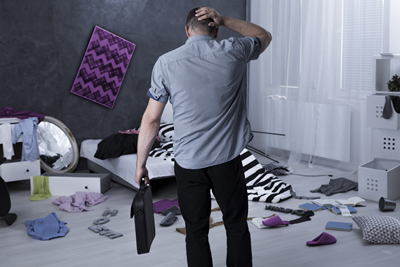
Chances are you have some form of home insurance, whether it’s a comprehensive buildings and contents policy or just contents cover if you’re a tenant. But despite being one of the most important financial products around, it is surrounded by many myths and misconceptions.
1. Accidents will be covered
Accidents do happen, whether it’s the TV falling off the wall or a pot of paint or a glass of wine spilling and ruining the carpets. Not to worry, the home insurance will cover it, right?
Well, not necessarily. While some home insurance policies offer cover against accidental damage, it’s certainly not a given.
Indeed, policies will generally cost more if you want to cover yourself in case misfortune strikes and you damage something in the home accidentally. So it’s best to check if accidental cover is an optional level of cover with your home insurer, or included as standard, so there will be no surprises if you need to claim.
2. I should insure the property for its market value
The responsibility for arranging buildings insurance will normally fall to the freehold owner of the building as a whole. This is a form of insurance that protects the actual building itself, from the walls and floor to the roof.
You will need to set out exactly how much cover you need, and an easy mistake to make is to go for the market value of the property. However, what you actually need is the rebuild cost of the property, which may be rather different.
The Association of British Insurers suggests using the Royal Institution of Chartered Surveyors’ (RICS) building cost information service to establish what the rebuild cost of your property is likely to be.
3. Homes with a history of flooding won’t be able to get insurance
It’s true that after the dramatic floods in 2007, homes that were affected had a difficult time arranging affordable home insurance that included flood cover.
However, the launch of Flood Re - a new scheme helping insurers offer more affordable flood insurance to people living in areas at risk of flooding - has made a huge difference.
Even homes with a history of flooding should be able to arrange cover now. According to figures from Flood Re, around four out of five householders who have previously made a claim on their insurance due to a flood have seen a 50% drop in the cost of their current cover.
Find out more about our scheme with Flood Re, Build Back Better.
4. I have contents cover, therefore my belongings are completely covered
You may assume that in the event of a claim everything will be covered entirely under your contents cover, however that may not be the case.
All contents policies will have single item limits, which as the name suggests is the most that the insurer will pay out to replace one single belonging. These limits tend to be around £1,000-£1,500, so if you have some high-end jewellery, electronics or valuables you may face a shortfall in the event of a claim.
It’s important to tell your insurer about any expensive items you own to make sure they are covered by your policy and to heck your policy documents for your current cover limits, as these vary between insurers.
5. You should bump up the size of your claim
There is a misconception that an insurer might try to unnecessarily reduce the amount of your claim; and to make up for that it is OK for a customer to bump up the value of their claim.
This is never OK. Knowingly overstating the size of your claim is fraud and a crime that could have very serious consequences. Insurers are also required to ensure they provide fair outcomes and settlements for any valid claim.
Fraudulent claims also make insurance more expensive for everyone. According to the Association of British Insurers, fraud can add up to £50 to the annual insurance bill for every UK customer.1
6. I have to get my buildings and contents insurance from the same company
Buildings insurance and contents insurance are two distinct forms of cover, and while you can get a combined policy covering you for both, you don’t have to.
If you want to, you can opt to take out separate buildings insurance and contents insurance policies with two different insurers. Bear in mind this will mean more admin for you though, with two different companies, applications and renewal dates to keep on top of, and potentially two sets of fees to pay.
7. My belongings are covered outside of the property as well
Some home insurance policies will offer protection when items are taken out of the home, for example if you take your laptop out with you to work.
This certainly isn’t a given though; you may need to pay extra for this feature on your policy. Check with your insurer what is and isn’t covered within your policy as this may vary between insurers.


